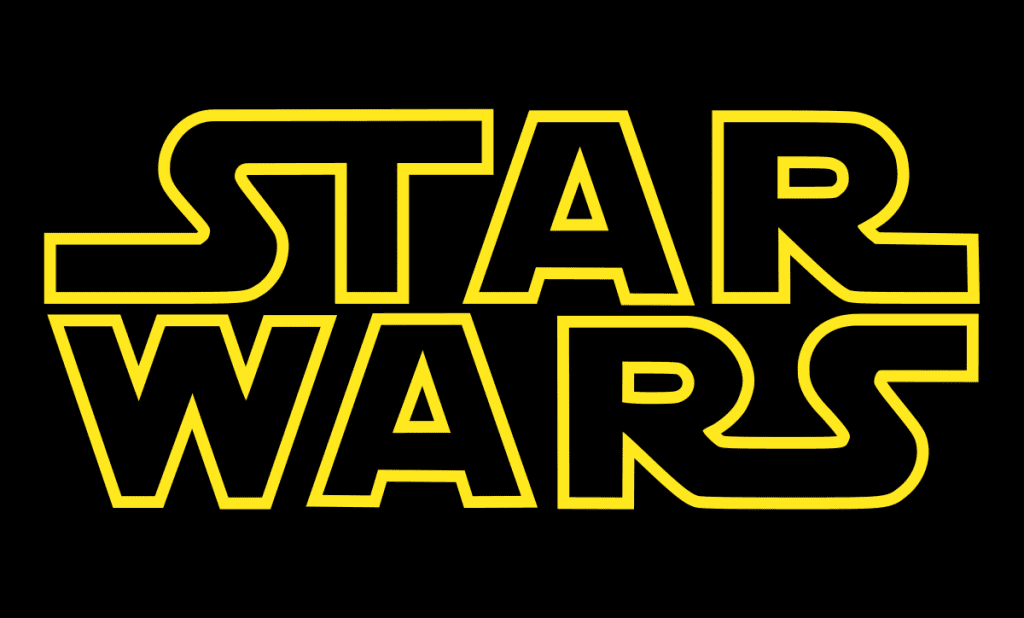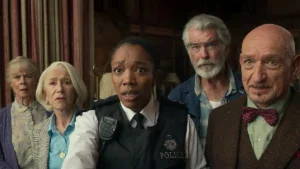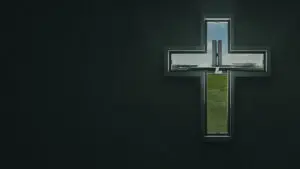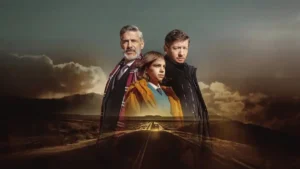Star Wars is one of the most beloved entertainment franchises, with George Lucas ushering in a new age of storytelling and technological innovation. After Disney bought Lucasfilm in 2012, the company redefined the official canon, creating new movies and shows while occasionally incorporating things from the old Legends continuity. The shows and films that make up the new canon will be ranked here.
It, unfortunately, means leaving out the 2D animated Star Wars: The Clone Wars show by Genndy Tartakovsky, Star Wars: Visions, and other content like the 1984 film Caravan of Courage: An Ewok Adventure. But that still leaves 23 total projects to be ranked from best to worst.
Ranking All Star Wars Movies and TV Shows (Best to Worst)
1. Star Wars: The Clone Wars – TV Show
While the first season of Star Wars: The Clone Wars is rough, the show picks up fast. It introduces characters that are now fan favorites – like Captain Rex and Ahsoka – and constantly puts audiences in unique and interesting scenarios. The crowning achievement of The Clone Wars is by far and away taking nameless soldiers that all look the same and giving each one individual attributes, which meant fans grew more attached to them.
It isn’t just new characters that shine. Existing ones get their due, with familiar prequel characters getting stories that improve Star Wars: Episode III – Revenge of the Sith. The show explores an unimaginable amount of topics with depth and complexity thanks to the arc structure of the show. It catapulted Dave Filoni into Star Wars stardom, and with good reason.
2. Andor
When Lucasfilm announced Andor, the fandom met it with a collective shrug. A prequel show to a spin-off movie didn’t sound all that enticing. But those early assumptions couldn’t have been more wrong. With masterful writing from Tony Gilroy, incredible set design, and brilliant acting from the whole cast, Andor shocked everyone.
The show has a lot to say, tackling weighty topics like oppression, what it means to stand up to a dictatorship, and the banality of evil. Its speeches are a particular highlight in this regard. The show isn’t afraid to take on modern political developments, something Star Wars is well equipped to do.
3. Star Wars: Episode V – The Empire Strikes Back
While the prequel era has the best TV show, the best Star Wars film belongs to the original trilogy. Star Wars: Episode V – The Empire Strikes Back does what all great sequels do and builds on what came before, with a strong opening sequence, letting Harrison Ford truly shine as Han Solo, and developing the universe by introducing concepts like Force Ghosts, Yoda, and of course the most famous twist in cinema history.
It doesn’t stop there. The film expands on Star Wars’ scum and villainy, introducing bounty hunters to the world. It marks the first major appearance of Boba Fett, a character so cool he spawned an entire in-universe culture. John Williams improves his already masterful score, giving audiences the Imperial March, a theme that makes Vader even more intimidating.
4. Star Wars: Episode III – Revenge of the Sith
While some of the dialogue is a bit cringy, Star Wars: Episode III – Revenge of the Sith is amazing to watch. And it’s only been improved by The Clone Wars (and countless memes). Anakin’s fall now has more weight, and Order 66 is a more emotional moment. The tragedy of the destruction of the Jedi and the loss of the clones’ individuality is felt much more keenly instead of just happening.
The film also stands on its own. The opening battle hints at the adventures that made Obi-Wan and Anakin brothers-in-arms, and the highly anticipated duel between Obi-Wan and Anakin doesn’t disappoint. Williams once again delivers a phenomenal score, and the CGI no longer looks like it’s from the PS1 era.
5. Star Wars: Episode IV – A New Hope
The original Star Wars, now called Star Wars: Episode IV – A New Hope, started everything about the franchise in 1977. And even though people – including George Lucas – keep changing it for the worse, there is still so much to love about the film. Williams’ score is legendary, and the locations and characters it introduces are unforgettable.
Luke, Leia, Han, Chewbacca, Darth Vader, and more are all brilliant and played wonderfully by the cast. Its action is breathtaking, constantly putting audiences on the edge of their seats. A New Hope is a melting pot of inspirations, the monomyth, samurai, historical, western, and political, which are all drawn on to deliver a fantastic film.
6. The Mandalorian
Disney+ launched in 2019, and its biggest selling point back then was the new Star Wars show The Mandalorian. No one knew what to expect, but the show proved it could hold its own. It follows Mandalorian Din Djarin and his adventures with Grogu, a baby that took the fanbase by storm. These adventures are primarily enjoyable, exploring a post-imperial galaxy and Mandalorian culture, tying it back to animated shows like The Clone Wars for a cohesive universe.
The production of these episodes is fantastic, with the introduction of the Volume, which is a fascinating bit of technology. Ludwig Göransson proves he’s capable of crafting a score that stands apart from Williams’ iconic music but is still fundamentally Star Wars.
7. Star Wars: Episode VI – Return of the Jedi
Bringing the original trilogy to a satisfying conclusion, Star Wars: Episode VI – Return of the Jedi completes Luke’s journey as a Jedi and brings Darth Vader back to the light with an emotional reunion with his son. Its battles are very enjoyable, especially with editing that allows the audience to keep track of the final three battles that occur at once.
It’s the goofiest entry of the original three, introducing Jabba the Hutt and the Ewoks, but it still takes everything seriously. Fans also get their first in-person look at the Emperor, played by Ian McDiarmid. Everything about him is excellent, from the makeup, arrogant attitude, and manipulative behavior all show a man far more powerful than his hobbled appearance suggests.
8. Rogue One: A Star Wars Story
The first Disney spin-off movie, Rogue One: A Star Wars Story, is based on an iffy premise, expanding on one line from the opening crawl of A New Hope. But it overcomes this with interesting characters and great battles. A bit of nuance is injected into the Rebel Alliance with Diego Luna’s Cassian Andor and Forest Whitaker’s Saw Gerrera. It brings shades of grey to an organization previously thought all good. The film weaves action around bureaucratic infighting in both the Rebel Alliance and Empire, giving a better look at both factions.
Rogue One shines a light on Imperial oppression, exploring several worlds throughout the galaxy. The third act of this film shines. The Battle of Scarif captures the magic of the original trilogy in space and also features a compelling ground battle. While Vader’s dialogue is not great, his final massacre more than makes up for that, making him a welcome inclusion.
9. Star Wars: Tales of the Jedi
As Filoni took on a bigger role in helping to develop Disney’s slate of live-action TV shows, specifically those set in the post-Return of the Jedi era, he hasn’t been involved with the animation side of the universe as much. Star Wars: Tales of the Jedi is him returning to his roots to develop animated shorts. Apart from focusing on familiar characters, these deliver what audiences love. They feature gorgeous animation dripping with detail and a morally complex exploration of beloved characters.
While Ahsoka’s shorts are fun to watch, they are ultimately the least interesting as they focus on a character that audiences already know. But the three about Count Dooku are brilliant, giving more depth to why he fell to the Dark Side, coming to a satisfying conclusion when Palpatine manipulates him into killing Yaddle.
10. Ahsoka
Ahsoka Tano hasn’t always been popular. But over the years, the love for her character has grown, so much so she fronted her own show, Ahsoka. It picks up Rebels’ story and does a good job at adapting characters like Sabine and Hera into live-action and continuing their stories. The show introduces Compelling new characters like Baylan Skoll and Shin Hati, and they’re there for more than just a saber fight, though those are great, too.
In one of its more surprising moments, the show reveals the existence of a new galaxy, but it’s rather dull when the show visits, as nothing stands out. The return of Grand Admiral Thrawn is exciting, with both Filoni and actor Lars Mikkelsen delivering a memorable character.
11. Star Wars: The Bad Batch
The transition from the Republic to the Empire in the immediate aftermath of Order 66 is a fascinating aspect of Star Wars. This is why, at times, Star Wars: The Bad Batch can be frustrating. When it is exploring this transition, the show is engrossing. But when the show deviates from this (which is far too often), it struggles to come up with much that’s as compelling. Star Wars has a rich criminal underworld, but it isn’t showcased well in this series.
The core characters are OK, but the show’s highlight is when it offers different perspectives on the transition, revisiting characters and locations from The Clone Wars and Rebels. It’s beautifully animated in a style that somehow keeps getting better. The voice acting is still phenomenal. How Dee Bradley Baker pulls off so many different voices is mind-boggling.
12. Star Wars: Rebels
After canceling The Clone Wars, Disney focused on Star Wars: Rebels. Following a group of rebels, this show started on even rockier ground than The Clone Wars but developed over time. The show regularly introduces new and mystical aspects to the Force, concludes the stories of fan-favorite characters, and explores the formation of the Rebel Alliance.
While it never reaches the highs of The Clone Wars, there are still several standout moments, like the reintroduction of Grand Admiral Thrawn, Ezra and Kanan’s unique relationship as master and student, and the expansion on the Mandalorian side of the universe. In season four, it’s possible to see how far the animation style and storytelling have developed, with a compelling tale of the liberation of Lothal.
13. Star Wars: Episode VII – The Force Awakens
Disney had the unenviable task back in 2015 of bringing Star Wars back to the big screen for the first time in over ten years, but they pulled it off with Star Wars: Episode VII – The Force Awakens. While the plot sticks to familiar ideas, the film sets the stage for the future with intriguing questions. Rey has gone on to be a controversial character, but in The Force Awakens, she’s compelling, and the same is true for Finn and Poe. Finn, being a turncoat stormtrooper, has the most to offer here.
Kylo Ren is a great villain. He’s an ill-tempered Vader wannabe, right down to the helmet. It’s a fantastic idea for a Dark Side villain, one made even better by Adam Driver’s performance. The First Order, while mostly just a copy of the Empire, draws on real-world inspirations of being the Star Wars equivalent of Neo-Nazis.
14. Obi-Wan Kenobi
Everyone was hyped for the return of Ewan McGregor and Hayden Christensen in an Obi-Wan Kenobi spin-off. While it didn’t deliver everything fans wanted, it is a serviceable six-episode run on the character, allowing Obi-Wan and Anakin to reunite in an emotional sequence. Leia is a surprising but great inclusion, with Vivien Lyra Blair giving her the trademark sass.
Some of the action and set design for the show leaves a lot to be desired. And while the appearance of the Inquisitors is a great nod, their live-action interpretation doesn’t capture their animated appearance. Reva’s character arc is unsatisfying, and it would have been better if the character had been killed.
15. Star Wars: Episode I – The Phantom Menace
While an OK film, Star Wars: Episode I – The Phantom Menace is a disappointing entry in the Star Wars franchise. The decision to visit Anakin as a child is as confusing as it is painful to watch, and while it’s heartwarming to see Ahmed Best return as a Jedi, Jar Jar Binks is still unbelievably annoying. The second act drags on and on, with the only highlight being the Podrace.
However, Ray Park as Sith assassin Darth Maul and Liam Neeson as the wise but rebellious Jedi Qui-Gon Jinn are standout characters. The final duel on Naboo is fast-paced and full of acrobatics that organically add to that feeling without the forceful use of CGI. Williams delights with “Duel of the Fates,” perhaps the best score of the prequels.
16. Solo: A Star Wars Story
This film really didn’t need to exist. While it’s based on the coolest character in A New Hope, Han’s origins are not what makes him great. Solo: A Star Wars Story goes through the motions of ticking things off in Han’s life, including a checklist of how he got everything, right down to his name and the supposedly iconic dice. Most of the original characters are forgettable, apart from L3-37, who incessantly bangs on about droid rights.
Alden Ehrenreich makes the character of Han his own and doesn’t copy Harrison Ford’s take, and Donald Glover gives a good performance as Lando, full of charisma. The Kessel Run is visually impressive, along with the train heist, but otherwise, it’s a skippable experience.
17. Star Wars: Episode II – Attack of the Clones
While the prequels have received much love over recent years, in the case of Star Wars: Episode II – Attack of the Clones, it’s largely misplaced love. That’s down to the truly terrible dialogue, especially any lines given to Christensen. Fans might quote the infamous speeches about hating sand and slaughtering Tusken Raiders, but it isn’t because they love them. There are several instances of shoddy video game CGI like Yoda flipping about like a lunatic.
There are some redeemable aspects. The Kamino investigation is interesting to follow, and Count Dooku provides the film with an air of regalness due to a genuinely good performance by Christopher Lee, despite entering the film far too late.
18. Star Wars: Episode VIII – The Last Jedi
This is going to be a controversial one. Opinions on Star Wars: Episode VIII – The Last Jedi vary wildly, but it’s near the bottom here. The film is desperate to subvert every plot point possible, rapidly shifting what’s happening. This never lets the film’s ideas stick, as they’re constantly undermined by the latest twist. The film also takes away any credibility that the First Order has as a faction by making them utterly inept.
As jarring as this is, the film never stops being beautiful to watch. There is cinematic flair and intention with each shot. Driver stands above everyone else as Kylo Ren. His rise to Supreme Leader sees him ascend from a petulant Vader fanboy by doing what Vader could never do: kill his master and take over. That, and the heroes being utterly defeated by the end, teased a new direction for the final film.
19. The Book of Boba Fett
After seeing the brilliance of The Mandalorian, people were excited to see what Jon Favreau could do for Boba Fett. However, the seven episodes of The Book of Boba Fett are a textbook example of character assassination, exposing Boba Fett’s naturally cool mystery and revealing nothing interesting. The show shatters Boba’s reputation as a ruthless killer, giving him a compassionate nature and showing the man shunning crime and investing in Tatooine’s economy.
Seven episodes are technically wrong, as two focus almost exclusively on Din Djarin. They highlight how much he’s replaced Boba Fett as the ruthless and intriguing bounty hunter. Favreau attempted to take Boba Fett in a different direction, but unfortunately, it didn’t work.
20. Star Wars: The Clone Wars – Movie
Back in 2008, George Lucas wanted the new Star Wars TV show, Star Wars: The Clone Wars, to have a flashy introduction on the big screen. But instead of intentionally creating a movie fit to do that, he had Filoni and the rest of the team knit together four episodes in a Frankenstein creation that barely works as a single movie.
Although this sets the stage for things to come, the film itself is difficult to watch. The animation is uneven at best, the nonstop action prevents any emotional stakes, and its tone alters from scene to scene. But if the movie had to fail so the TV show could flourish, then that’s an acceptable price to pay.
21. Star Wars: Resistance
Similar to how The Clone Wars expanded and improved on the prequels, Star Wars: Resistance aimed to do the same for the sequel trilogy. And there’s ample room to do this, what with the First Order springing up out of nowhere in The Force Awakens. It could have given the audience some much-needed backstory to the major players of that era. But much like the sequel trilogy, the potential is wasted.
Resistance is handicapped by being a kids’ show aimed at an even younger audience than Rebels. The tone is geared more toward the lighter side of things, meaning the show can’t explore key issues with any weight. It’s a shame. When compared to The Clone Wars, Rebels, or The Bad Batch, Resistance doesn’t hold a candle to any of them.
22. Star Wars: Young Jedi Adventures
Star Wars works best when both kids and adults can get something out of it. Most of the prior animation efforts understand this and thus are accessible to fans of any age. But Star Wars: Young Jedi Adventures goes against this philosophy, seeking to appeal to first-time fans aged four or five and no one else.
Which is OK. But for being the first on-screen foray into the High Republic era, something that a Lucasfilm publishing drive has been fleshing out for a while, it doesn’t highlight anything new happening in that era and fails to attract new fans. The show repeats many lessons and themes of other Star Wars projects, including themes and even Yoda.
23. Star Wars: Episode IX – The Rise of Skywalker
At long last, Star Wars: Episode IX – The Rise of Skywalker appears on the list. And the film deserves to be here. It feels like a sequel to The Force Awakens than The Last Jedi, ignoring everything The Last Jedi set up. Its plot is as rushed as the film’s production. There are no captivating themes; it shafts Finn and John Boyega, and the film makes the baffling decision to return Rey to her identity, even after The Last Jedi moved the character on.
The kernels of ideas the film has for its villains never get time to develop, ignored in favor of wheeling out the rotting carcass of Palpatine and his boring fleet of mini-Death Stars. The attempts at fan service are forced, desperately seeking fan approval. The Rise of Skywalker is an irredeemable movie.




